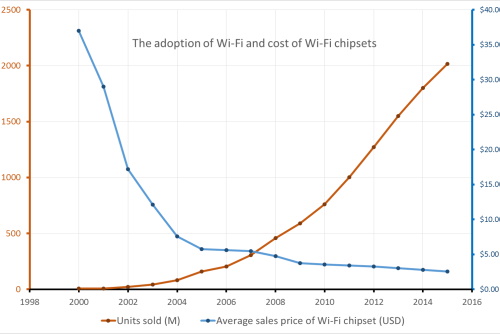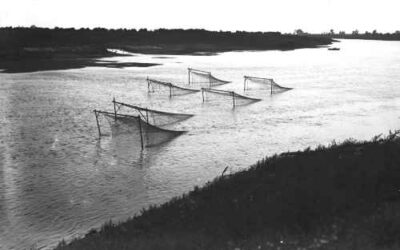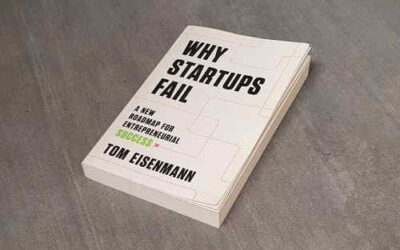Intellectual Property Licensing
How to optimize the license for the use of your technology
We optimize intellectual property license terms and conditions to create the best possible conditions for adopting standards and technology. The right IPR policy and license program is key to the success of startup businesses and standards development organizations.
1. License terms and conditions are a balancing act
License terms and conditions are a balancing act. The best choice is not always obvious and depends on the priorities of the owner of the IPR.
1.1. Lower or higher royalty rates?
Lower royalty rates decrease the long term potential value but speed up adoption and increase short term value. Higher royalty rates increase the incentive for competitors to innovate around the patents, or to take their chances and wait to see if the patent owner is prepared to sue.
1.2. License everyone or grant exclusive licenses only?
Granting exclusive rights can create an incentive for licensees to invest in promoting the licensed technology. That will increase short term value. Broad licensing, that allows use in all products and applications, delivers higher long term value because the potential market is larger. Broad licensees will have limited incentive to promote the technology, and that reduces short term value.
Finally, be aware that exclusivity creates a strong incentive for the excluded competitors to develop alternatives. The risk that the technology becomes obsolete is higher with an exclusive license strategy.
2. How to make a technology dominant
Some technologies have the possibility to “lock in”. They become the dominant design, the solution preferred by everyone. This is obviously very attractive for the owners of the IPR. Getting the license terms and conditions right is essential for maximizing the probability that your technology becomes dominant.
2.1. Dominance by being first to market
A technology can become dominant, simply because it is the first solution that solves a serious problem. Such a technology can remain dominant when it attracts more investments than alternative solutions and improves faster than alternatives.
2.2. The optimal first to market license strategy
To optimize the intellectual property license terms for a first to market strategy, consider these aspects:
- Keep royalties so low that it is not attractive to invest in developing alternative solutions.
- Make the license conditional to the use of a trademarked logo. This logo will create brand awareness by end-users, who will learn to prefer this technology over future alternatives.
When the patents are relatively weak, the speed of adoption becomes more important. Offer serious advantages for the first companies that bring your technology to market. Don’t be greedy!
2.3. Dominance by using network effects
Technologies can also lock in when they are used in a product that is subject to strong “network effects”. When the network effect is strong, the value of the technology increases with the number of users and that makes it harder for new technologies to replace an established technology.
When the network effect is strong, the product introduction will be slow and adoption of the technology will be slow. It can take years from first product introduction to mass market volume. It took Wi-Fi 10 years (from 1995 to 2005) to reach more than 100 million units sold per year. It took Qi wireless chargers 6 years (from 2010-2016) to reach 50 million units per year.
2.4. The optimal license strategy to benefit from network effects
To optimize the intellectual property license terms for a strategy that depends on network effects, consider these aspects:
- Commit to RAND licensing. This promotes adoption of the technology by limiting potential royalty rates to a level that has no negative impact the use of the technology.
- Wait with investing in creating the license program until the volume is high enough to justify the cost. Wait with setting royalty rates until it is clear how much users value the technology. That perceived value is low in the early stage of adoption and will grow with increased sales volume and awareness.
- Take a long view. It can take years before licensing income provides a positive return on investment.
3. Optimize intellectual property license terms by increasing the scope
Some of the most effective license programs combine patent and trademark licenses and make these licenses available only for prodiucts that are compliant with a technical specification. Such a “techno-legal framework” creates conditions that cause suppliers, customers, distribution channels, and even competitors to automatically operate in ways that are beneficial for the owner of the IPR. With minimal litigation and preferable without any litigation. That is the most sophisticated way to optimize intellectual property license terms.
Our publications on intellectual property licensing
RAND royalty rate setting – leave it to the market?
Market forces can determine RAND royalty rates for standard essential patents such that (a) the standard is rapidly adopted, (b) royalty rates are accepted by the majority of users without need for litigation, and (c) royalty rates are transparent and non-discriminatory.
Why Startups Fail
Review of the book “Why Startups Fail” by Thomas Eisenmann. Data from Eisenmann’s survey suggests that lack of proprietary intellectual property plays a role in the failure of startups. Survival is harder when IPR doesn’t protect the first-to-market advantage.
Can patents prevent the use of a standard?
Developers of standards don’t like it when a patent owner blocks the use of their standard. The considerable effort that goes into developing a standard, typically hundreds of man-years, is wasted when that standard is not used.





